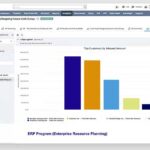The Best Fluffy Pancakes recipe you will fall in love with. Full of tips and tricks to help you make the best pancakes.
Business Intelligence Requirements Gathering: Navigating the Path to Data-Driven Excellence
In the ever-evolving landscape of business, the ability to glean actionable insights from vast datasets has become a pivotal factor in strategic decision-making. Business Intelligence (BI) systems serve as the catalyst for this transformation, providing organizations with the tools to convert raw data into meaningful information. However, the journey towards a successful BI implementation begins with a crucial step: requirements gathering. In this article, we explore the significance of Business Intelligence Requirements Gathering and unveil key considerations for a comprehensive and effective process.

The Essence of Business Intelligence Requirements Gathering
1. Understanding Organizational Objectives: At the heart of BI requirements gathering is a deep comprehension of organizational objectives. What are the overarching goals? What specific insights can drive these goals forward? By aligning BI initiatives with business objectives, the foundation for meaningful analytics is laid.
2. Engaging Stakeholders: Stakeholders play a pivotal role in the success of any BI implementation. Identifying and engaging with stakeholders across various departments ensures that the BI solution caters to diverse needs. From executives seeking high-level insights to operational staff requiring granular data, each perspective contributes to a holistic BI strategy.
3. Defining Key Performance Indicators (KPIs): Key Performance Indicators are the compass guiding business success. During requirements gathering, articulate and refine the KPIs that matter most to the organization. These could range from financial metrics to customer satisfaction indices, providing a clear direction for the BI solution.
4. Data Sources and Integration: Understanding the landscape of data is paramount. Identify the sources of data within and outside the organization. Whether it’s transactional databases, cloud-based applications, or external feeds, a comprehensive view of data sources lays the groundwork for effective BI integration.
5. User Roles and Access Levels: Different users within an organization have varied needs when it comes to data access and utilization. During requirements gathering, define user roles and access levels. This ensures that individuals receive the right information at the right granularity, fostering efficient decision-making.
6. Reporting and Visualization Preferences: The effectiveness of BI lies not only in the data it provides but also in how that data is presented. Capture the reporting and visualization preferences of users during the requirements gathering phase. Whether it’s detailed reports or interactive dashboards, tailoring the BI solution to user preferences enhances its utility.
Best Practices for Business Intelligence Requirements Gathering
1. Conducting Workshops and Interviews: Interactive workshops and one-on-one interviews with stakeholders provide valuable insights. These sessions facilitate open communication, allowing stakeholders to express their needs, expectations, and pain points. This qualitative approach ensures a nuanced understanding of requirements.
2. Utilizing Prototypes and Mockups: Creating prototypes or mockups of potential BI dashboards can be instrumental in requirements gathering. Visual representations help stakeholders grasp the possibilities of the BI solution, eliciting more specific and detailed requirements.
3. Iterative Approach: BI requirements are not static; they evolve as the business landscape changes. Adopting an iterative approach to requirements gathering allows organizations to adapt to evolving needs, ensuring the BI solution remains aligned with business goals.
4. Collaboration between IT and Business Teams: Effective BI implementation requires a seamless collaboration between IT and business teams. The technical expertise of IT professionals, coupled with the business acumen of stakeholders, ensures a holistic and realistic approach to BI requirements gathering.
5. Documenting and Validating Requirements: Thorough documentation of gathered requirements is a cornerstone of success. This documentation serves as a reference point throughout the BI implementation process. Regular validation sessions with stakeholders ensure that the documented requirements accurately reflect their needs.
Conclusion: Empowering Organizations with Strategic Insights
In conclusion, Business Intelligence Requirements Gathering is the cornerstone of a successful BI journey. By delving into organizational objectives, engaging stakeholders, and understanding the intricacies of data sources, organizations can craft a BI solution that truly empowers decision-makers. Leveraging best practices, such as workshops, iterative approaches, and collaborative efforts, ensures that the BI solution remains flexible, responsive, and aligned with the ever-changing dynamics of the business landscape. As organizations navigate the path to data-driven excellence, a robust requirements gathering process becomes the compass, guiding them towards a future where strategic insights drive success.



